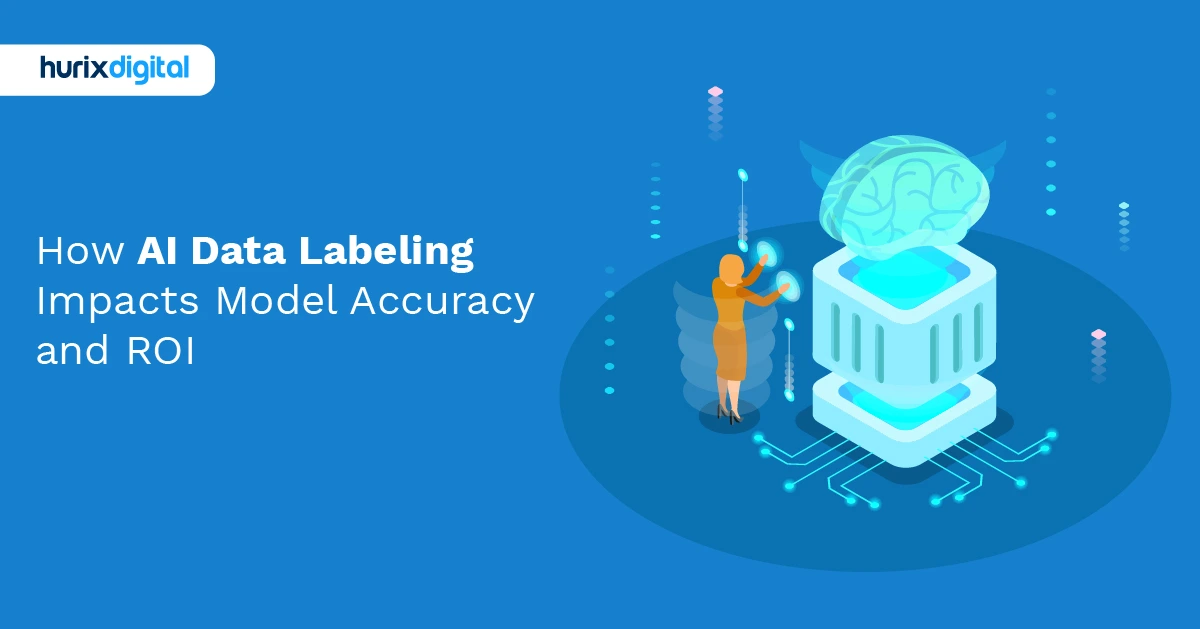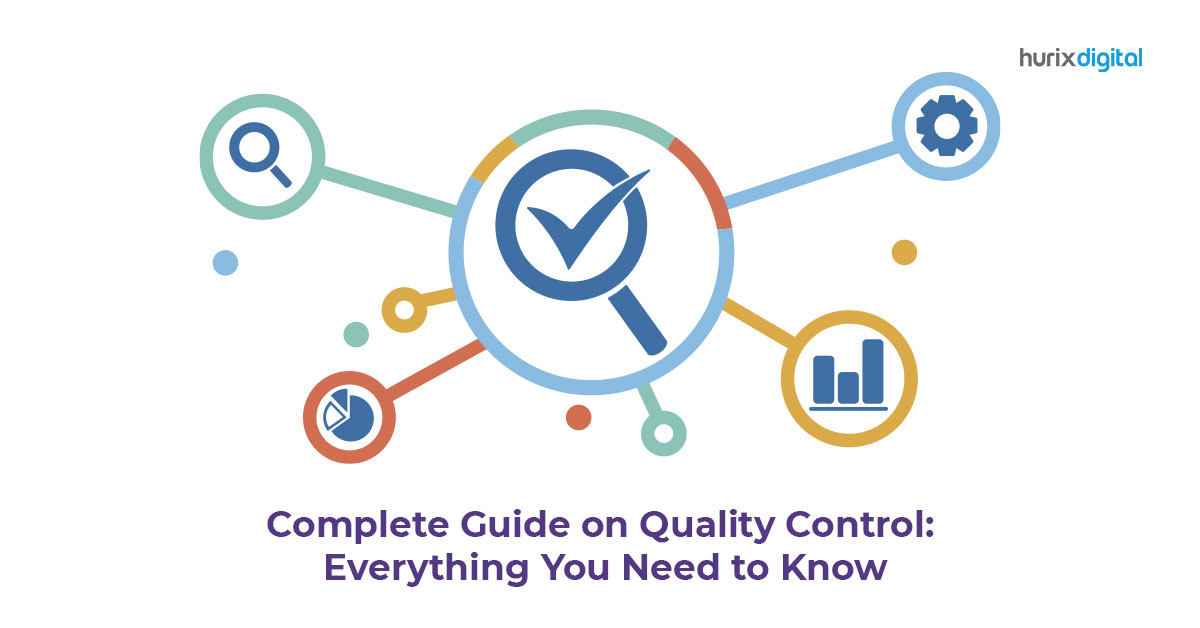
How AI Data Labeling Impacts Model Accuracy and ROI?
Summarize with:
Data labeling is the backbone of any successful AI project, and let’s be honest, it’s often the most underestimated part. And the hard truth most vendors won’t tell you is that half of all AI projects fail because of inadequate data labeling. Not bad algorithms. Not insufficient computing power. Just poorly labeled data that doomed the project before the first model was trained. We often forget that models are only as good as the data we feed them, so getting caught up in the logic is easy. Getting the data labeling part right isn’t just about volume. It’s about quality, consistency, and a keen understanding of your specific use case.
This blog discusses common pain points, including inconsistencies between labeling teams and compliance hurdles. We delve into the details of active learning, synthetic data, and assessing the impact of your efforts on the model’s performance. The idea is not only to know some tricks but also to learn strategies, such as selecting the right vendor and utilizing continuous improvement programs. This blog addresses the data labeling obstacles head-on, emphasizing that realizing the full potential of your AI endeavors should be a key consideration.
Table of Contents:
- What are the Biggest ROI Killers in AI Data Labeling Pipelines?
- How to Ensure Consistent Quality Across Global Data Labeling Teams?
- What Emerging Data Labeling Techniques Offer the Highest Accuracy Gains?
- What’s the Best Strategy for Handling Ambiguous Data Points?
- How Can You Leverage Active Learning to Minimize Labeling Costs?
- What Compliance Considerations Exist for AI Data Labeling in Healthcare?
- How Do You Measure the True Impact of Data Labeling on Model Performance?
- What Role Does Synthetic Data Play in AI Data Labeling Strategies?
- How Do You Choose the Right Data Labeling Vendor for Your Specific Needs?
- What are the Best Practices for Continuous Data Labeling Improvement Programs?
- The Path Forward
What are the Biggest ROI Killers in AI Data Labeling Pipelines?
To be frank, AI can only be as good as the data taught. Such data requires labels like substantial and coherent labeling. In contrast, labeling pipelines can cause money to be lost more quickly than mentioning machine learning. Where is the return on investment (ROI) disappearing act?
Rework ranks as enemy number one. An automotive company discovered more than one-third of its labeled images needed relabeling after quality checks. That’s not just double the cost. It’s double the time, frustrated teams, and delayed projects. The root cause? Vague labeling guidelines that different annotators interpreted differently. One person’s “partially visible pedestrian” was another’s “background object.” You can imagine the financial nightmare you’d face if you multiplied that confusion by millions of images.
Tool inefficiency creates another money pit. Enterprise teams often use consumer-grade annotation tools because they’re familiar or free. But watching highly paid data scientists spend hours fighting with clunky interfaces is like paying a surgeon to sharpen pencils. Then there’s the expertise mismatch problem. General-purpose labeling teams working on specialized domains produce expensive garbage.
How to Ensure Consistent Quality Across Global Data Labeling Teams?
Alright, so ensuring consistent quality across global data labeling teams, eh? It’s more art than science, honestly. We have seen this go sideways so many times.
First, clear instructions are non-negotiable. But clear isn’t just “technically accurate.” It’s about anticipating misunderstandings. We once worked on a project labeling images of unusual medical conditions. We had annotators from different cultural backgrounds, and some interpretations of “normal” varied WILDLY. We ended up needing a detailed, illustrated glossary that addressed cultural nuances. Tedious? Yes. Necessary? Absolutely.
Training, continuous training, matters. Don’t just onboard them and let them loose. Think of it like coaching a sports team: regular drills, performance reviews, and opportunities for improvement. A good system will highlight areas where labelers consistently disagree. Those discrepancies are gold. They pinpoint where your instructions aren’t clear enough or where ambiguity exists in the data itself.
Lastly, be humble about imperfection. However well you train and however clear your guidelines are, there will always be cases around the edges and split decisions. Build that expectation into your quality control process. Spot checks, inter-annotator agreement scores, and even some good old-fashioned human reviews are necessary. It is not about eliminating imperfection but reducing it to a minimum. Also, do not forget to correct yourself on those mistakes. That is where the gold lies.
What Emerging Data Labeling Techniques Offer the Highest Accuracy Gains?
Okay, so you’re chasing accuracy. We all are, right? Regarding data labeling, it’s not just about throwing more bodies at the problem. In our experience, real progress grows from a handful of out-of-the-box ideas, and most will surprise you.
First, active learning. It’s not new, but it’s getting smarter. Instead of randomly labeling data, you train your model a little, then ask, “Okay, what are you most confused about?” The idea is that the data points that are hardest for the model to predict are the ones that will teach it the most.
How do you actually do this? There are a few common strategies. One is uncertainty sampling. The model flags the data points where its prediction confidence is lowest. Another is query by committee, where you train a few different models and have them vote. If they disagree, that’s a good signal that the data point is worth labeling.
The beauty of active learning isn’t just the cost savings; it’s also about getting more bang for your buck. You are training your model on the most informative examples first. It usually makes the model converge much, much faster, and that’s important.
What’s the Best Strategy for Handling Ambiguous Data Points?
So, you’re wrestling with noisy data, huh? We’ve all been there. Perfect data exists only in textbooks and vendor demonstrations. Real data comes in messy, ambiguous, and contradictory forms. Organizations that accept this reality build better systems than those chasing perfection.
Smart teams have evolved five core strategies that transform data confusion into a competitive advantage. These methods help you extract value from uncertainty while maintaining quality standards.
1. Quarantine Approach
Putting questionable data in quarantine is smarter than just deleting it. Instead of tossing out a fuzzy data point, mark it and leave it alone. They hang around in a sort of digital waiting room until we can spot a clear trend. A speech recognition company discovered its “unclear audio” bucket contained valuable accent variations. What seemed like noise was a signal for an underserved market segment. Those previously useless files became training data for their most successful product expansion.
2. Ambiguity Scoring
Ambiguity scoring beats binary decisions. Instead of forcing “yes/no” labels, allow confidence ratings. “Definitely a stop sign” versus “probably a stop sign” versus “might be a stop sign.” This granularity helps during model training. Uncertain labels get lower weights.
3. Edge Case Documentation
Edge case documentation prevents repeated confusion. When annotators encounter something weird, they document it. And they do it not in a dusty old wiki, but in an up-to-date database packed with screenshots and the thinking behind each call.
4. Multiple Interpretation Tracking
Multiple interpretation tracking acknowledges reality. Some data points genuinely have multiple valid labels. A sentiment analysis company stopped forcing annotators to pick one emotion for complex text. “This seems angry but also sad, with hints of sarcasm.” Rich labels beat reductive ones. Their models learned to detect emotional complexity, not just primary feelings.
5. Periodic Ambiguity Reviews
Periodic ambiguity reviews reveal systematic issues. Monthly meetings where teams discuss the weirdest and most confusing data points often reveal labeling guideline problems.
How Can You Leverage Active Learning to Minimize Labeling Costs?
Something compelling about active learning, even if it sounds like buzzword bingo, is that it can produce better results by labeling the right 1,000 images instead of a random 10,000. The challenge lies in the implementation details that determine success or expensive failure.
Starting smart beats, starting big. Many teams train initial models on the existing labeled data and then utilize active learning for expansion. Then, diversity sampling prevents model blind spots. Uncertainty-based selection alone creates echo chambers. Models frequently ask about similar edge cases while overlooking entire categories. Smart implementations balance uncertainty with representation.
Detecting a performance plateau early can save both time and money. Active learning eventually hits a point of diminishing returns, yet that signal is easy to overlook. Instead of only watching the overall score, monitor how much each training batch really improves. Pull the plug on new data and rethink the next step when that gain slides below your set point.
What Compliance Considerations Exist for AI Data Labeling in Healthcare?
Labeling healthcare data happens in a tricky world of rules. One small mistake can escalate into huge fines, court cases, or a ruined reputation. Still, new ideas often need that same sensitive data. Groups that win at this balance detail planning with strong, step-by-step processes.
There are significant implications for data labeling under the Health Insurance Portability and Accountability Act (HIPAA). True de-identification requires understanding 18 identifiers and countless edge cases. A healthcare client assumed they were compliant until realizing their high-resolution tissue samples contained unique scar patterns that could identify patients. They now apply algorithmic blurring to identify features while preserving diagnostic information, potentially. Paranoia pays in healthcare.
International labeling introduces jurisdictional nightmares. Data from European patients labeled by teams in India for algorithms deployed in the United States—whose rules apply? All of them. Furthermore, clinical validation requirements affect labeling strategies. The FDA doesn’t just care about the accuracy of your model. They are concerned about your labeling process.
How Do You Measure the True Impact of Data Labeling on Model Performance?
After spending hours and hours labeling data, you might wonder if any of that work really improved the model’s accuracy. We all hope for an instant boost, but spotting that boost among other changes isn’t easy.
First, resist the urge to focus solely on overall accuracy. It’s a blunt instrument. A high score can mask numerous problems, especially if your dataset is imbalanced. We once worked on a project classifying medical images and achieved fantastic accuracy until we realized the model was essentially predicting the most common diagnosis. Doh!
Instead, dive deeper. Confusion matrices are your friend. They show you where your model is making mistakes. Are certain classes consistently mislabeled? Is it confusing the two categories in particular? This highlights areas where your labeling may be weak or ambiguous.
What Role Does Synthetic Data Play in AI Data Labeling Strategies?
Regarding data labeling, synthetic data is not a buzzword in this case, but the lifeline of AI. Labeling real-life data is very similar to finding two or three shiny rocks in a mountain of rocks. Yes, it is boring, uneconomical, and sometimes full of prejudices hiding in the dark.
That’s precisely where synthetic data steps in. Picture fake data made by computers that looks and acts like the real stuff. Say you want an AI that spots a rare tumor in X-rays. Finding enough real images is nearly impossible, and the effort opens a Pandora’s box of privacy and ethics challenges. Instead, you can create a set of lifelike, pretend tumor images, each tagged correctly, and never endanger any patient’s confidentiality.
Now, some will claim that synthetic data is the silver bullet. But let me tell you, it’s not perfect. The algorithm creating the data must be precise. If it doesn’t accurately reflect reality, your AI will learn from a distorted view. That’s where the art comes in.
Synthetic data can significantly reduce the manual labeling effort and help address biases in existing datasets.
How Do You Choose the Right Data Labeling Vendor for Your Specific Needs?
Picking the right data labeling vendor? It’s not like grabbing a coffee, is it? It’s more like finding the perfect tailor. You need something that fits your specific needs, not just something off the rack.
First, be brutally honest about your data. Is it all nice and neat, like a library catalog? Or is it a chaotic jumble, like my teenager’s room? Because a vendor who shines with clean data might fumble with the messy stuff.
Think about the annotation type. Simple bounding boxes? Tricky semantic segmentation? Something even more niche? You may be impressed by the shiny home page of a vendor’s website, but dig deeper. Request some samples of their work in your field.
Finally, pilot projects are your friend. Avoid committing to a large contract upfront. Start small, test their quality and responsiveness, and then scale up only if they prove themselves. Consider it a trial run. It’s more like dating before getting married. You want to make sure that they are the right fit before committing to a long and expensive project.
What are the Best Practices for Continuous Data Labeling Improvement Programs?
Continuous improvement in labeling may sound like jargon, but skipping it invites a few troubles. Organizations that excel view labeling like they view product design—iterative, testable, and never truly finished.
Version control for labeling guidelines seems obvious, but it rarely happens. Most teams have “the Google doc” that everyone edits chaotically.
Technology adoption requires careful change management. New tools and techniques can improve efficiency, but they can also disrupt established workflows. A manufacturing company learned this when its advanced AI-assisted labeling tool initially slowed production. Annotators didn’t trust the AI suggestions and spent extra time verifying everything. A gradual rollout with champion users would have revealed this resistance earlier.
And finally, empower your labelers to contribute to process improvements. They’re on the front lines; they see the pain points firsthand. Create channels for them to suggest new labeling guidelines, identify edge cases, and even propose tool improvements.
The Path Forward
Data labeling isn’t the glamorous part of AI. It’s the foundation upon which everything else builds. Organizations that treat it as a necessary evil often get evil results. Those approaching it strategically build competitive advantages that compound over time.
Smart leaders recognize that data labeling excellence isn’t a destination but a journey. Each improvement enables the next. Better labels produce better models. Better models identify labeling improvements. The virtuous cycle accelerates innovation while competitors struggle with the basics.
Ready to transform your AI’s potential with data labeling that actually works? Partner with Hurix Digital for strategic data annotation services that turn messy, ambiguous data into a competitive advantage. Connect with us today to learn more about our AI content services.
Summarize with:

Vice President – Content Transformation at HurixDigital, based in Chennai. With nearly 20 years in digital content, he leads large-scale transformation and accessibility initiatives. A frequent presenter (e.g., London Book Fair 2025), Gokulnath drives AI-powered publishing solutions and inclusive content strategies for global clients
 A Space for Thoughtful
A Space for Thoughtful 



